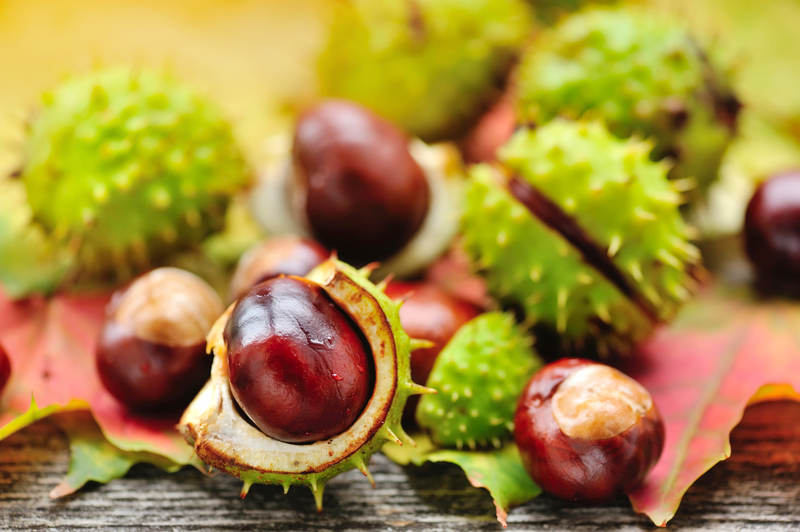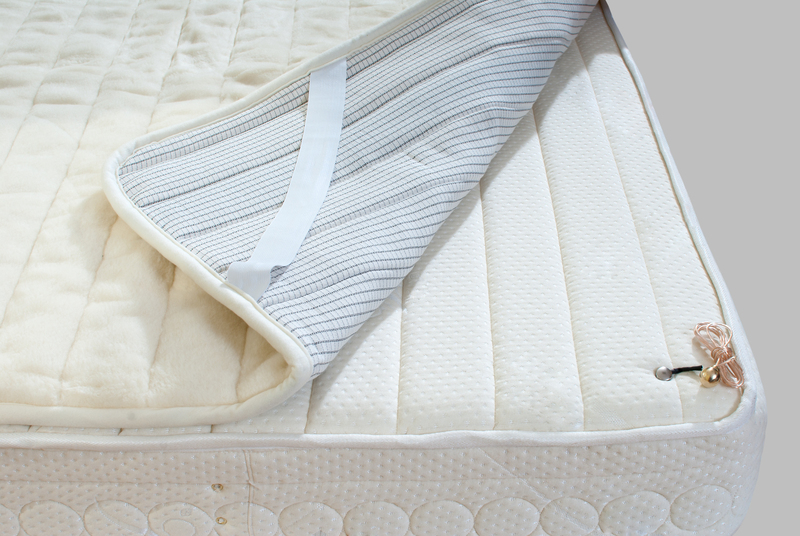Grease-Free Cooking: Steps to Clean Enamel Oven Trays with Ease
Posted on 27/05/2025
Grease-Free Cooking: Steps to Clean Enamel Oven Trays with Ease
Enamel oven trays are a cornerstone of modern kitchens--perfect for roasting, baking, and grilling your favorite dishes. As convenient as they are, persistent grease and burnt-on food can turn them into a cleaning nightmare. However, achieving grease-free cooking is easier than you think if you know how to clean enamel oven trays efficiently. In this comprehensive guide, we'll unveil the best methods, tips, and tricks to keep your enamel trays spotless while prolonging their lifespan.
Why Keeping Your Enamel Oven Trays Clean Matters
Your oven trays aren't just a platform for delicious casseroles and roasts--they play a crucial role in the overall taste and safety of your meals. Baked-on grease and food debris can impact both flavor and function:
- Even cooking: Clean surfaces allow heat to distribute more evenly, ensuring better cooking results.
- Food safety: Old grease harbors bacteria, affecting hygiene and food safety.
- Longevity: Excess grime can break down the enamel coating, leading to rust and shorter tray lifespans.
- Smoke Prevention: Burnt residue often smokes at high temps, polluting air and flavor.
- Ease of Use: Grease-free trays prevent sticking, making serving and future cleaning much easier.
Maintaining clean enamel trays is essential for a pleasant, safe, and efficient cooking experience.

Understanding Enamel-Coated Oven Trays
Before we jump into cleaning methods, it helps to understand the material. Enamel oven trays are steel or cast iron bases coated with a glass-like, non-porous layer. This makes them:
- Resistant to rust, stains, and acidic foods
- Easy to wipe clean when maintained regularly
- Durable and able to withstand high oven temperatures
However, enamel trays can chip with harsh scrubbing or sudden temperature changes, exposing the metal underneath. Gentle cleaning is key!
Steps to Clean Enamel Oven Trays Effectively
Ready to tackle those greasy trays? Here are the best step-by-step techniques for grease-free results:
1. Gather Your Supplies
- Mild dishwashing liquid
- Baking soda
- White vinegar
- Non-abrasive scrubbing pad or sponge
- Soft brush (optional)
- Microfiber cloth
- Old toothbrush (for corners and grooves)
- Hot water
- Plastic or wooden spatula (never metal!)
- Rubber gloves (to protect your hands)
Never use steel wool, scouring powder, or harsh chemicals, as these can scratch or dull the enamel coating.
2. Allow the Tray to Cool
Attempting to clean a hot tray may cause burns or warping. Let it cool to room temperature first to prevent damage and ensure safer handling.
3. Pre-Soak for Tough, Burnt-on Grease
For stubborn, baked-on grease:
- Fill the tray with hot (but not boiling) water and a squirt of dish soap.
- Let it soak for 30-60 minutes. The warmth helps dissolve fats, while the detergent lifts residue.
For extra cleaning power, add 2-3 tablespoons of baking soda to the soak. Baking soda is a gentle abrasive that helps break down stains without scratching the enamel.
4. Gently Scrub the Surface
After soaking, use a non-abrasive sponge or soft brush to remove loosened food and grease. If necessary:
- Use an old toothbrush for tight corners and tray edges.
- Employ a wooden or plastic spatula to lift stubborn bits--avoid metal tools at all costs.
Work in gentle, circular motions. Regular maintenance often means less force is needed.
5. Try a Natural Degreaser for Stubborn Spots
If grease persists, try this effective home remedy:
- Sprinkle a generous layer of baking soda on the greasy areas.
- Spray or pour white vinegar over the baking soda, creating a fizzy reaction that lifts grime.
- Let the mixture sit on the stains for 10-15 minutes.
- Wipe away the paste using your non-abrasive sponge and rinse thoroughly.
This combination not only cleans but deodorizes, leaving your tray fresh and ready for your next meal.
6. Rinse and Dry Thoroughly
After cleaning, rinse the tray with hot water to remove any residue from cleaners or soap. Wipe dry immediately with a microfiber cloth to prevent water spots or rust on any exposed steel edges.
7. Tackle Persistent Stains Without Damaging Enamel
If you're dealing with years of neglect or particularly stubborn stains, try these gentle methods:
- Paste method: Mix baking soda and water into a paste and spread over stains. Let sit overnight, then scrub with a soft brush and rinse.
- Commercial Enamel Cleaner: Use a product specifically designed for enamel (always read instructions!).
- Repeat Soaking: Sometimes, multiple rounds of soaking are needed to lift thick, old grease.
Additional Tips for Grease-Free Enamel Tray Maintenance
Make Cleaning a Habit
The best way to keep your enamel trays clean is to clean them soon after use, before grease and food residue harden. Quick spot-cleans save you time and effort down the line.
Use Linings or Baking Mats
For truly grease-free cooking experiences, line your oven trays with parchment paper or reusable silicone baking mats before use. This protects the enamel from direct contact with oils, sugars, and sticky sauces, dramatically reducing cleanup time.
Avoid Extreme Temperature Changes
Don't add cold water to a hot tray or place a hot tray in the fridge. Thermal shock can cause enamel to crack, exposing the metal underneath to rust.
Don't Overcrowd the Tray
Give food plenty of space. Overcrowding increases the risk of dripping and overlapped food burning onto the surface, making cleaning harder.
Inspect for Chips and Damage
Check occasionally for chips in the enamel. If you find any, be extra cautious--exposed metal rusts easily and is harder to clean. Consider replacing heavily-damaged trays to maintain food safety and grease-free results in cooking.
Common Mistakes to Avoid When Cleaning Enamel Oven Trays
- Using metal scouring pads: These will scratch and degrade the enamel surface.
- Harsh chemicals: Avoid caustic oven cleaners unless explicitly safe for enamel.
- Letting grease sit for days: The longer grease remains, the more difficult it is to remove.
- Stacking wet trays: Always dry completely before storing to prevent rust at edges.
- Neglecting the edges: Grease buildup isn't always visible but can lurk in grooves and corners.
Eco-Friendly Enamel Tray Cleaning: Green Alternatives
Grease-free oven tray cleaning doesn't require harsh or polluting chemicals. In fact, the most effective solutions are often kitchen staples:
- Baking soda & vinegar: Already described above, this classic combo cleans and deodorizes naturally.
- Lemon juice: Its acidity cuts through grease and leaves a fresh scent--use as you would vinegar.
- Castile soap: A biodegradable, plant-based soap safe for enamel surfaces.
- Olive oil: For a final touch, a drop of olive oil on a paper towel can add shine and make future cleaning easier (use very sparingly).
How Often Should You Clean Your Enamel Oven Trays?
Frequency of cleaning depends on use:
- After every use: Quick wash for general use and light baking.
- Weekly deep clean: For frequent roasting or heavy use, a soak and scrub each week prevents serious build-up.
- Monthly inspection: Check for chips, warping, and deep stains. Address problems early to maintain oven tray performance.

Expert Answers to Frequently Asked Questions
Can enamel oven trays go in the dishwasher?
Many enamel trays are labeled dishwasher-safe. However, to preserve their shine and prevent chipping, hand-washing with mild detergent is recommended for grease removal and long-term care. Dishwashers may gradually dull the enamel surface with abrasive action and detergent.
Is soaking overnight safe for enamel trays?
Yes, as long as you use only warm soapy water or gentle natural cleaners. Avoid highly acidic or caustic solutions, which could break down the enamel if soaked for too long.
Why does my tray still feel greasy after washing?
This can happen if the tray wasn't scrubbed fully or if grease has polymerized (hardened) at high oven temperatures. Try a second soak with hotter water, more baking soda, and a longer wait. Finish with a vinegar rinse for a squeaky-clean result.
How can I restore luster to a dull enamel tray?
After cleaning, rub a tiny amount of mineral or olive oil into the clean, dry surface (use sparingly and wipe off excess). This can revive shine and keep your trays looking new.
Summing Up: Grease-Free Oven Cooking Starts With Clean Trays
Grease-free cooking isn't just about using less oil--it's also about maintaining spotless cookware that enhances flavors and protects your health. By following these simple, effective steps, you can clean your enamel oven trays with ease, extending their life and ensuring every meal starts with a clean slate.
- Act quickly after cooking.
- Use gentle, natural cleaners.
- Skip the abrasives--protect your enamel!
- Practice routine maintenance for best results.
Make these cleaning habits part of your kitchen routine for effortless, grease-free oven tray care. Your food will taste better, your oven will stay smoke-free, and you'll enjoy hassle-free cleanup for years to come!
Ready to upgrade your kitchen cleaning routine? Share your own tips for cleaning enamel oven trays in the comments, and discover even more grease-busting ideas for a healthier, happier home-cooked experience.


